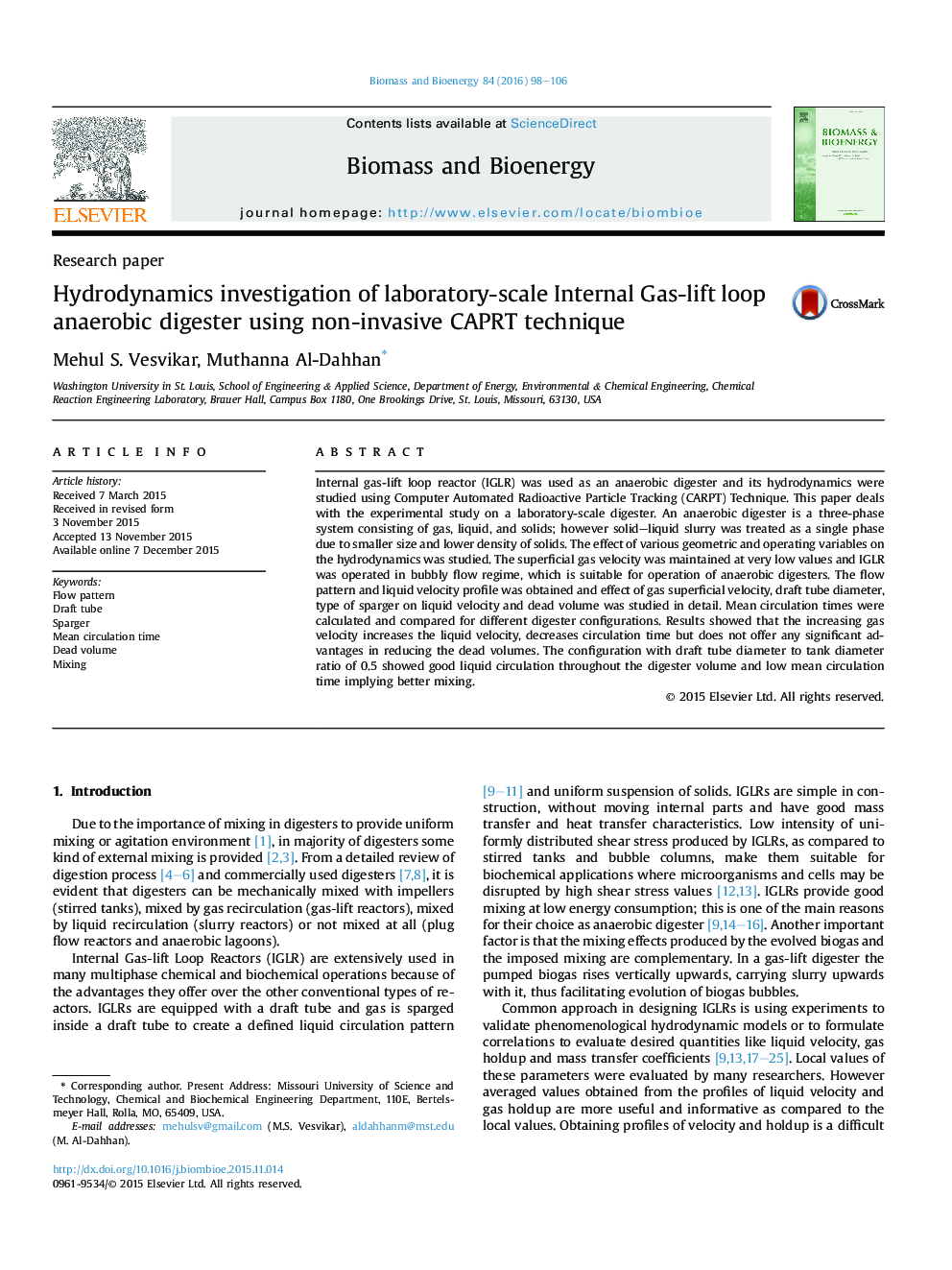| Article ID | Journal | Published Year | Pages | File Type |
|---|---|---|---|---|
| 676725 | Biomass and Bioenergy | 2016 | 9 Pages |
•Experimental hydrodynamic studies were performed to optimize the digester design.•Mean circulation time is used to quantify the mixing performance.•Draft tube to tank diameter ratio of 0.5 provides better mixing.•Increased gas flow rate enhances mixing performance at higher operational costs.
Internal gas-lift loop reactor (IGLR) was used as an anaerobic digester and its hydrodynamics were studied using Computer Automated Radioactive Particle Tracking (CARPT) Technique. This paper deals with the experimental study on a laboratory-scale digester. An anaerobic digester is a three-phase system consisting of gas, liquid, and solids; however solid–liquid slurry was treated as a single phase due to smaller size and lower density of solids. The effect of various geometric and operating variables on the hydrodynamics was studied. The superficial gas velocity was maintained at very low values and IGLR was operated in bubbly flow regime, which is suitable for operation of anaerobic digesters. The flow pattern and liquid velocity profile was obtained and effect of gas superficial velocity, draft tube diameter, type of sparger on liquid velocity and dead volume was studied in detail. Mean circulation times were calculated and compared for different digester configurations. Results showed that the increasing gas velocity increases the liquid velocity, decreases circulation time but does not offer any significant advantages in reducing the dead volumes. The configuration with draft tube diameter to tank diameter ratio of 0.5 showed good liquid circulation throughout the digester volume and low mean circulation time implying better mixing.
